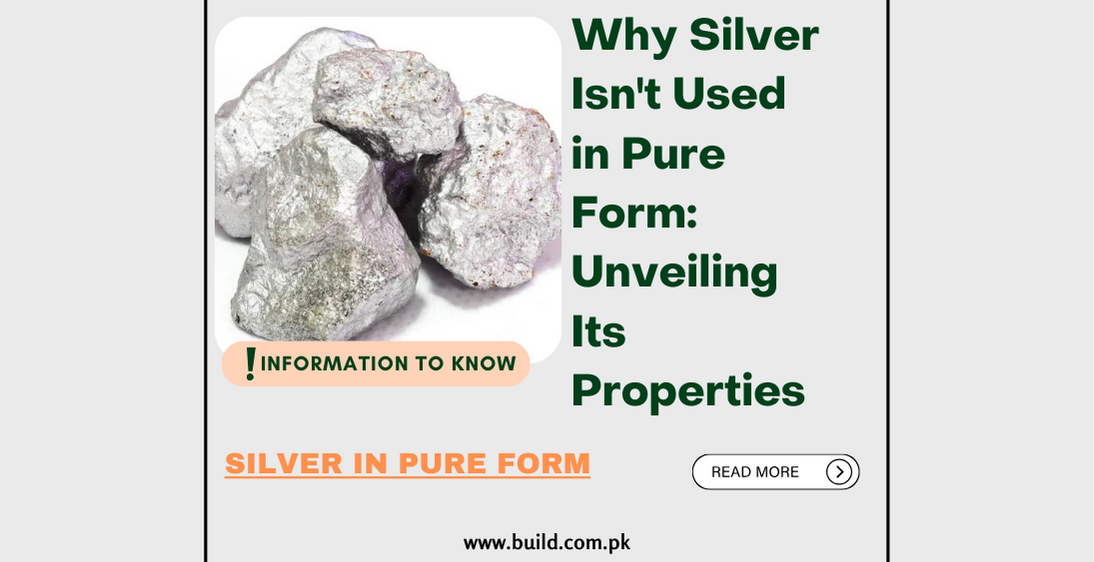Why Silver Isn't Used in Pure Form: Unveiling Its Properties

Introduction:
Silver, known for its lustrous appearance and various applications, h olds a significant place in industries and everyday items. However, using silver in its pure form comes with certain challenges due to its inherent properties and characteristics.
Understanding Silver's Properties
Softness and Malleability:
Pure silver, renowned for its
captivating sheen and pliability, is inherently soft. This characteristic makes
it extremely malleable, allowing for easy shaping and intricate designs.
However, this very softness makes it susceptib le to deformation and damage,
limiting its practicality in applications requiring robustness and durability.
Tarnishing Tendencies:
Silver is prone to tarnishing when
exposed to elements in the air, sulfur compounds, or certain chemicals. This
natural oxidation process leads to the formation of silver sulfide, resulting
in a dull or discolored appearance. While tarnishing doesn't affect the metal's
intrinsic properties, it impacts its aesthetic appeal, especially in contexts
where visual brilliance is crucial.
Reactivity and Limited Stability:
Silver exhibits some
reactivity, making it unsuitable for certain chemical or industrial processes
where stability or inertness is essential. This reactivity can affect its
compatibility with specific substances, potentially limiting its use in certain
applications.
Alloys and Silver's Applications
To overcome the inherent limitations of pure silver,
alloying—blending silver with other metals—is a prevalent practice to enhance
its properties for various applications:
Sterling Silver:
Comprising 92.5% silver and 7.5% copper
or other metals, sterling silver strik es a balance between silver's allure and
durability. This alloy strengthens the metal, making it more resistant to
scratches, preserving its aesthetic appeal while improving durability.
Silver Alloys in Industrial:
Alloys of silver with metals like copper, zinc, or nickel are used in industries requiring enhanced strength, conductivity, or corrosion resistance. These alloys find utility in electrical contacts, mirrors, and specialized industrial equipment.
Challenges with Pure Silver's Use
Durability Concerns:
The softness of pure silver poses
significant limitations in items requiring durability and resilience to wear,
such as cutlery, mechanical components, or coins. In these applications, the
inherent malleability of silver renders it less practical.
Maintenance Demands:
Tarnishing, while not impacting
silver's properties, necessitates regular cleaning and maintenance, which might
be impractical or inconvenient in certain contexts. This added maintenance is a
consideration in choosing silver for certain applications.
Cost and Practicality:
The cost-to-benefit ratio of using
pure silver in applications often doesn't justify its utilization due to the
trade-off between its allure and the practical limitations associated with its
pure state.
Practical Applications of Silver Alloys
Jewelry Making:
Sterling silver's blend of beauty and
durability makes it a preferred choice for crafting intricate jewelry. Its
affordability and attractiveness appeal to a wide range of consumers.
Electrical and Industrial Applications:
Alloyed silver
maintains high electrical conductivity and corrosion resistance, making it
suitable for various electrical components, contacts, and specialized
industrial tools.
Medical and Scientific Instruments:
Alloyed silver's
antimicrobial properties and durability find applications in medical devices,
laboratory equipment, and specialized instruments.
Conclusion:
While pure silver's alluring properties captivate, its
inherent limitations—such as softness, tarnishing, and reactivity—limit its
direct utilization in numerous practical applications. Alloying silver with
other metals, especially in the form of sterling silver or specific industrial
alloys, strikes a balance between its captivating aesthetics and enhanced practicality.
Understanding the properties challenges, and advantages of both pure silver
and its alloys underscores the balance between allure and practicality,
influencing its extensive usage across diverse industries and applications.









